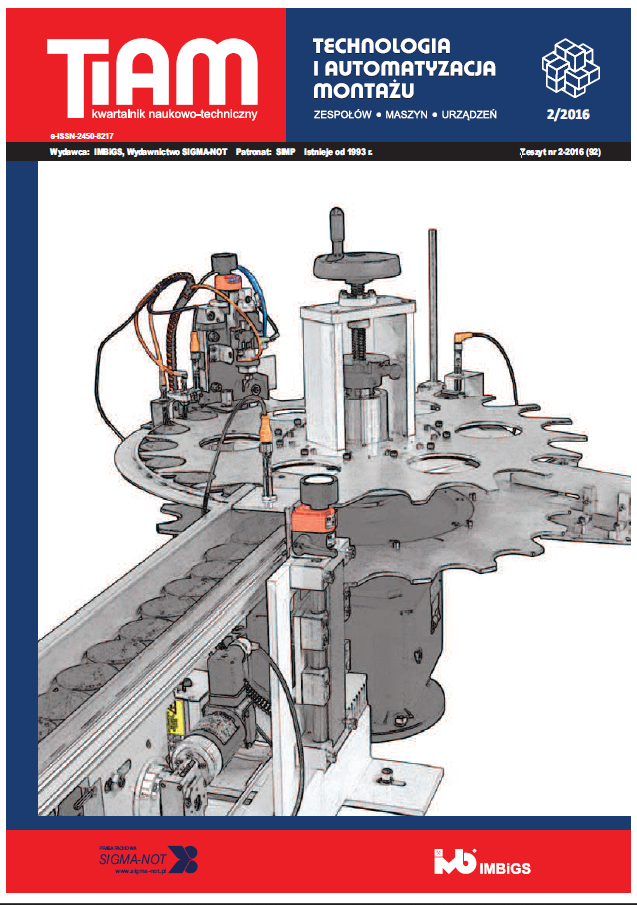Abstract
The article shows a fragment of the studies related to the mechanical surface treatment of stainless steel sheet surfaces for bonding. The samples of single lap bonded joints were tested. The stainless steel sheet surfaces were prepared by mechanical treatment using grinding tools of varoius grain size (P120, P320, P500) and by degreasing using the Loctite 7063 agent degreasing. Loctite Hysol 9466 A&B two-component epoxy adhesive was used for preparing bonded joints. The surface roughness measurements, strength tests was carried out in the experimental studies and statistical analysis the research results was made. On the basis of the analysis of the test results, it was found that the greatest strength of the bonded joints is obtained after treatment with P120 grinding tool, meanwhile the least – after using P500 grinding tool. Carried out statistical analysis has allowed to find that after P120 and P320 grinding tools treatment is a lack of statistically signifiant differences between the values of the strength on the accepted confidence alfa = 0.05. In addition, it was also noted that with increasing surface roughness, also the strength of the bonded joints was increased.
This is an Open Access article distributed under the terms of the Creative Commons Attribution License CC BY 4.0 (https://creativecommons.org/licenses/by/4.0/)
References
Czaplicki J., J. Ćwikliński, J. Godzimirski, P. Konar. 1987. „Klejenie tworzyw konstrukcyjnych”. Warszawa: WKiŁ.
DIN EN 1465. Adhesives. Determination of tensile lap-shear strength of bonded joints.
Godzimirski J. 2002. „Wytrzymałość doraźna konstrukcyjnych połączeń klejowych”. Warszawa: WNT 81–82, 97–115.
http://www.loctite.pl, data pobrania 5.01.2015
http://www.stalkwasoodporna.pl, data pobrania 22.12.2015.
„Kleje i klejenie. Poradnik inżyniera i technika”. 1977. Praca zbiorowa pod red. Charles V.Cagle’a. Warszawa: WNT.
Krysicki W. i in. 1999. „Rachunek prawdopodobieństwa i statystyka matematyczna w zadaniach. Cz. II. Statystyka matematyczna”. Warszawa: PWN. 85–94.
Mirski Z., T. Piwowarczyk. 2008. „Podstawy klejenia, kleje i ich właściwości”. Przegląd Spawalnictwa (8): 12–21.
PN-EN 10088-1: 2007.
Rudawska A., Ł. Dzwonkowski. „Przyrząd do ustalania próbek połączeń klejowych, zwłaszcza powierzchni płaskich”. Zgłoszenie patentowe P403112. Biuletyn Urzędu Patentowego (19): 40–41.
Rudawska A. 2013. „Wybrane zagadnienia konstytuowania połączeń adhezyjnych jednorodnych i hybrydowych”. Lublin: Wydawnictwa Uczelniane Politechniki Lubelskiej 40–45, 70–72, 83–93.


